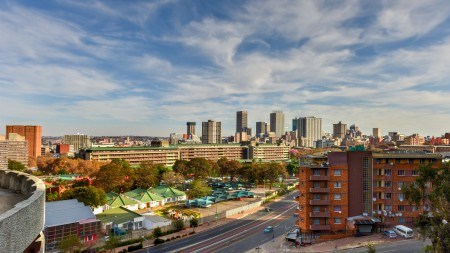South Africans are moving to urban areas at a faster rate than the world average and this has implications for the future of South African property.
In 1960, only around 46.6% of South Africans lived in urban areas but more recently the figure has changed dramatically with around two-thirds of the population now living in the country’s metros.
“According to a survey released by the South African Institute of Race Relations, the proportion of people living in urban areas increased from 52% in 1990 to 62% in 2011. The share of those living in rural areas dropped from 48% to 38% over the same period. Urban living surpassed rural living in South Africa in 2009. Currently, South Africa has a higher urbanization rate than the world average and it is expected to continue increasing at a rapid rate. As a result, density, scarcity and re-urbanisation will be the key long-term themes in the property market for some time, as the current stock does not support the growing demand for urban property,” says Adrian Goslett, Regional Director and CEO of RE/MAX of Southern Africa.
What has caused this trend?
The two major causes that Goslett has identified for rapid urbanisation are; people having more freedom to move around in post-apartheid South African and economic opportunities in metros.
“People are drawn to urban areas because there are greater employment opportunities. Urbanisation has created a concentration of economic activity, which is alluring to people who need jobs. The largest percentage of growth in urban areas has been in the smaller cities, this is mostly because of these areas having a small initial population, increasing economic activity, and less competition,” says Goslett.
SA is following a startling worldwide trend
Urbanisation is not a trend that is unique to South Africa. Globally around 54% of the world’s population currently lives in urban areas, which is around 3.9 billion people. It is estimated that this will grow to around 66% by 2050, which is in the region of 6.4 billion people. It is expected that as a continent Africa’s rate of urbanisation will overtake Asia’s by the year 2030.
The implications for property
Most of the property in South Africa currently is full title homes which account for around 82.7% of the current market. The rest of the market is made up of sectional title homes (12%) and estates (5%). Goslett predicts that as the urban population increases and land become more scarce, housing density will need to increase to keep pace and fewer full title homes will be built.
According to statistics from ABSA bank, in the last 20 years, flats and townhouses have made up 26.6% of newly completed buildings. In the last three years, around 36% of all residential development units financed by ABSA, were sectional title units. “Sectional title homes are in great demand due to a few reasons, such as financial pressure on consumers, the inadequacy of land, and changing demand for lifestyle. It has been said that full title properties may well become an impractical and outdated luxury for most South Africans,” says Goslett.
He concludes by saying that the changing property needs within the country are no longer merely a trend they are a reality. People are migrating to suburban inner-city areas where they can live, work and play, eat and shop. This is not merely because it is the place to be, but rather because of the convenience and lifestyle urban living provides.



